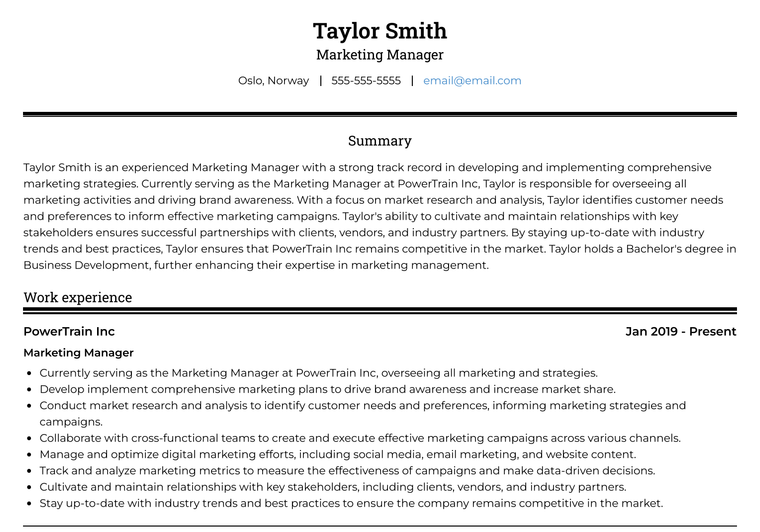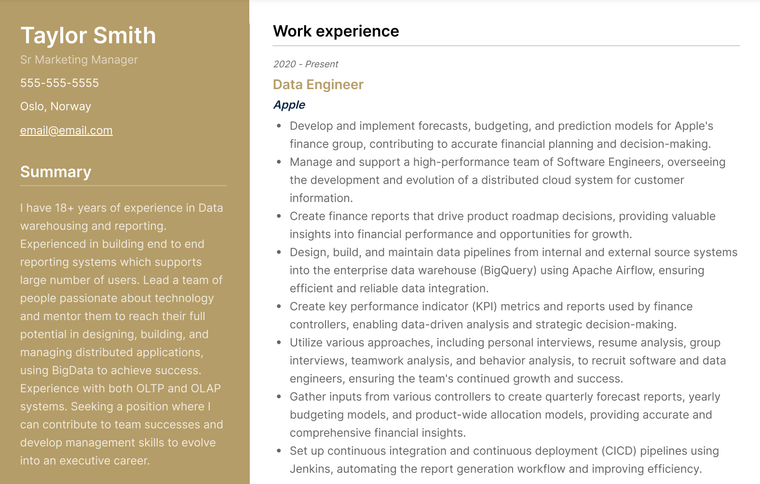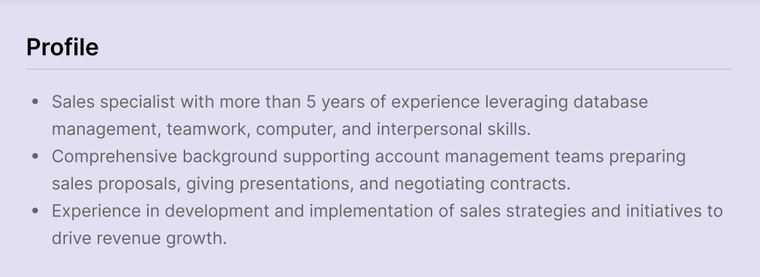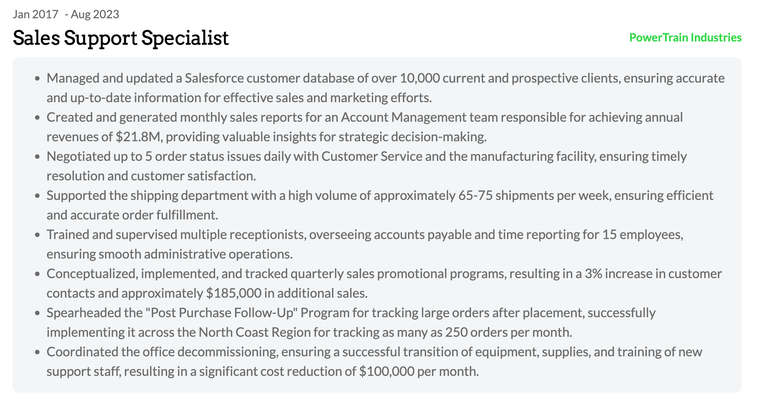Norwegian Resume Formats, Templates, and Writing Tips
Applying for a job in Norway? This Norwegian resume guide has some tips, FAQs, and templates to inspire you to write the perfect resume.
To land a great job in Norway, it’s important to learn how to write a great Norwegian resume.
The Norwegian resume that gets you the job will be the one with the right structure, the right template, and the right personal details. Like all countries, Norway has specific expectations for job applications, so if you want your Norwegian resume to be successful and impress hiring managers, you need to make sure it is written and formatted correctly.
Whether you are a current Norwegian resident or are planning to move there soon, you will need to write a resume that lands an interview. This article will discuss:
- Personal details for a Norwegian resume
- Norwegian resume formats
- Norwegian resume templates
- Norwegian resume tips
Norwegian Resume Requirements
First, it’s important to establish what basic information Norwegian employers are looking for on a resume. If your Norwegian resume is missing some of the simplest requirements, hiring managers aren’t going to read any further.
Mandatory personal details
It’s important to include these personal details on your Norwegian resume:
- Name
- Phone Number
- Email Address
- Date of Birth
Optional Personal details
While these details are not mandatory, they are commonly included in Norwegian resumes:
- Picture
- Marital Status
If you include a picture in your Norwegian resume, make sure it is high-quality and professional. A bad picture is worse than no picture at all. In Norway, including a picture in your resume is more common for customer-facing roles.
If you have a good LinkedIn profile, or a personal website or any other kind of professional online profile, you may want to include a link to it in your Norwegian resume.
How to write a Norwegian resume
Once you have settled on what personal details to include, you can get started on the real work of writing a Norwegian resume. It’s important to pick out all the right features for a great resume.
1 Choose the right Norwegian resume format
When you begin writing a resume, there are two types of resume formats to consider: reverse-chronological resumes and skills-based resumes.
In a reverse-chronological resume, the work experience section is the largest and most important part of the resume. This section will take up the most space and attract the attention of the reader.
In a reverse-chronological resume, list work experience sections in reverse-chronological order, beginning with your current or most recent position and working backwards.
The reverse-chronological resume is by far the most common Norwegian resume format. This format presents your job history and achievements simply, and makes the story of your career easy to understand. This is the format that most people use, and the format most employers are expecting.
In a skills-based resume, the skills section is the part of the resume that takes up the most space and draws the attention of the reader. It will take up more space than the Work Experience section, and offer more detail.
In a skills-based resume, each skill will be a heading, and examples of that skill will be listed beneath. The Work Experience section can be shorter and less detailed.
Skills-based resumes can be useful for job-seekers with a non-traditional career path, who may want to emphasize skills over Work Experience. By listing your skills first, you can make sure your abilities are front and center, and let your specific career history take a back seat. If you have changed careers, you have hopped between jobs frequently, or there are long gaps in your work history, you may want to consider a skills-based resume.
2 Select a great Norwegian Resume template
A great resume needs a great template. When you write your resume, it’s important to make sure you are using a template appropriate to your job search.
The template you use will depend on the job you are applying for and your personal career story. It’s important to consider what suits the specific industry you work in.
For example, if you are looking for work in a formal or traditional industry, like medicine, law, or accounting, you will likely want to use a formal, traditional resume template. VisualCV’s ATS template, for example, uses a traditional one-column design and tasteful section headings that would fit in in any professional environment.

If you work in a more modern industry, however, like technology or design, you may want to use a more modern template. VisualCV’s Quartz template, for example, features a bold colour column that draws the eye, while maintaining a readable and engaging format that will impress hiring managers.

Whichever template you choose, make sure it will fit on two pages. Most Norwegian employers expect a two-page resume, with enough space for detail, but no longer.
3 List your contact information
At the top of your resume, it’s important to include your contact information. Hiring managers need a way to contact you. In your contact information section, be sure to include:
- Name
- Home address
- Email address
- Phone number
- Date of birth
Optionally, you can also include links to professional online profiles, like LinkedIn or Twitter.
4 Include a profile
While not strictly mandatory, including a summary or profile at the beginning of your resume can be a great way to introduce yourself to an employer. In your profile section, write a short paragraph or bulleted list that briefly outlines your key skills and competencies. This section doesn’t need to have much detail, but a quick summary of what you can do for an employer can be what takes your resume from good to great.
For example, you might write:
- Sales specialist with more than 5 years of experience leveraging database management, teamwork, computer, and interpersonal skills.
- Comprehensive background supporting account management teams preparing sales proposals, giving presentations, and negotiating contracts.
- Experience in development and implementation of sales strategies and initiatives to drive revenue growth.

5 Showcase your work experience
If you are writing a reverse-chronological resume, your Work Experience section is the centrepiece of your Norwegian resume. This is where you will list all of your past positions in reverse-chronological order, beginning with your most recent. In each item, include the:
- Job title
- Company name
- Dates of employment
- Job description
In the job description, list some important skills, tools, and achievements from that job. Your job descriptions are your best chance to impress a hiring manager, so it’s important to get them right.
To write great job descriptions, focus on accomplishments rather than simple duties. Concrete examples of things you achieved will be much more impressive than a laundry list of responsibilities.
To brainstorm accomplishments, try to think of any quantifiable aspects of the job. This includes anything you can attach a number to: clients, customers, revenue, contacts, employees, sales. If you are responsible for any concrete statistical improvement, make sure to include it in your job description.
Further, use strong verbs and active language to describe your actions in your past job. Words like generated, ensured, spearheaded, and implemented all show you to be an effective worker who takes initiative.
For example, you might write:
Sales Support Specialist PowerTrain Industries
- Managed and updated a Salesforce customer database of over 10,000 current and prospective clients, ensuring accurate and up-to-date information for effective sales and marketing efforts.
- Created and generated monthly sales reports for an Account Management team responsible for achieving annual revenues of $21.8M, providing valuable insights for strategic decision-making.
- Negotiated up to 5 order status issues daily with Customer Service and the manufacturing facility, ensuring timely resolution and customer satisfaction.
- Supported the shipping department with a high volume of approximately 65-75 shipments per week, ensuring efficient and accurate order fulfillment.
- Trained and supervised multiple receptionists, overseeing accounts payable and time reporting for 15 employees, ensuring smooth administrative operations.
- Conceptualized, implemented, and tracked quarterly sales promotional programs, resulting in a 3% increase in customer contacts and approximately $185,000 in additional sales.
- Spearheaded the "Post Purchase Follow-Up" Program for tracking large orders after placement, successfully implementing it across the North Coast Region for tracking as many as 250 orders per month.
- Coordinated the office decommissioning, ensuring a successful transition of equipment, supplies, and training of new support staff, resulting in a significant cost reduction of $100,000 per month.

6 Show your skills
In a reverse-chronological resume, your skills section is secondary to your Work Experience section. However, a great skills section can still be an important part of your resume. Listing all of your most relevant and most important skills in a single, simple list is an easy way you make sure hiring managers know exactly what you are best at.
For example, you might write:
Skills
- Sales Methodology
- Relationship Building
- Lead Generation
- Opportunity Identification
- Client Relations
- Profit Generation
- Value Added Selling
- Collaboration
- Negotiation Techniques
If you are writing a skills-based resume, your skills section is more important. If this is the case, make each skill or skill area a heading, and provide examples of that skill in the skill description. This ensures that your skills receive the most focus and the most detail.
7 List your education and qualifications
For most job-seekers, your education section does not need to be very large. That doesn’t mean, however, that it isn’t important. For many jobs, education is essential, and strong academic qualifications are highly valued by employers.
In your Education section, list your degrees in reverse-chronological order, beginning with your most recent accreditation. For each entry, include the:
- Degree name
- School name
- Dates of study
If you are an experienced professional with several years of work under your belt, this is all you will need. If you are a student or recent graduate, however, you may want to include more details about your education in order to fill out your resume. Details might include coursework, specialties, or important projects. For example, you might write:
Bachelor of Science in Computer Science State University
- Acquired a strong foundation in computer science principles, algorithms, and programming languages.
- Developed problem-solving and analytical skills through coursework and projects.
- Demonstrated proficiency in various programming languages, including Java, C++, and Python.
- Collaborated effectively with classmates and professors to complete group projects and assignments.
8 Additional Norwegian resume sections
While the above sections are the most common, there are more sections that you can include in your Norwegian resume if you think it will help your application. These might include:
Certifications
If you have any certifications that don’t quite fit into your Education section, you might want to include a separate Certifications section. Certifications might include management training courses, trade tickets, special licenses, and more.
Volunteering experience
Volunteering experience can be just as impressive as Work Experience. If you have held volunteer positions that are relevant to the job you are applying to, don’t hesitate to include them in your Norwegian resume.
Professional affiliations and memberships
Memberships in a professional association or industry club can show that you are truly dedicated to your vocation.
Military service
In Norway, military service is mandatory for men, so it is common to include it in your resume.
Interests
Many employers like to learn a little about your personality. If you have the space on your resume, you might want to include a short list of your hobbies, whether that includes hiking, team sports, or music.
References
References are generally only included with a Norwegian resume if they are specifically requested. If an employer has asked for references, list their name, workplace, job title, and phone number.
9 Customize your resume
It’s important to customize your Norwegian resume for every application. Every company will be looking for specific skills and experience, so it’s important to make sure your resume is the perfect match. Relying on a single, generic resume for every application is unlikely to result in a successful job search.
To do this, read the job posting closely and take note of all the skills, tools, and attributes that are specifically mentioned. These are the terms you need to include in your resume. Update your resume so that it uses those exact terms so that the hiring manager (and the ATS) will know that you are the perfect candidate.
Copyright ©2025 Workstory Inc.